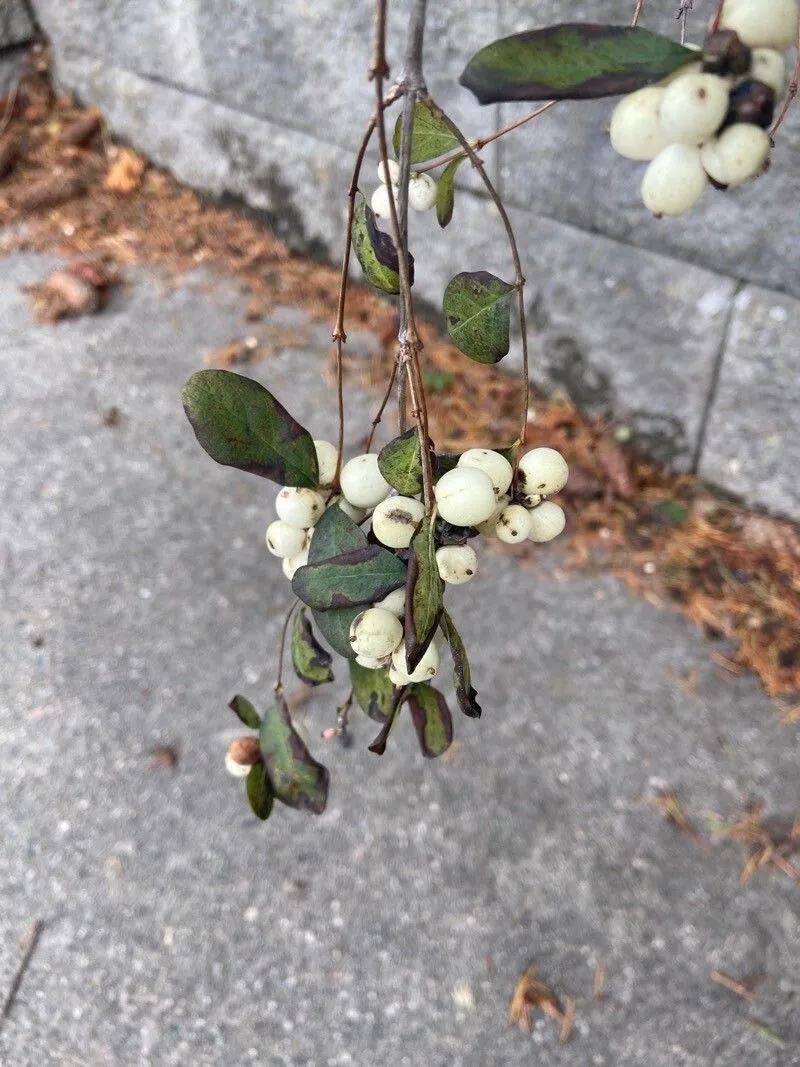
Author: A.Gray
Bibliography: J. Linn. Soc., Bot. 14: 12 (1873)
Year: 1873
Status: accepted
Rank: species
Genus: Symphoricarpos
Vegetable: Unknown
Observations: Nevada to W. Texas
Mountain snowberry, known scientifically as Symphoricarpos oreophilus, is a resilient and versatile shrub highly regarded for its adaptability to various ecological conditions. Described in 1873 by the eminent botanist A. Gray, who published his findings in the Journal of the Linnean Society, Botany, it remains a subject of interest for both horticulturists and ecologists due to its widespread occurrence and ecological importance.
Belonging to the Caprifoliaceae family, the mountain snowberry is indigenous to regions extending from Nevada to Western Texas. This hardy plant is typically found in mountainous and high-altitude areas, thriving in a range of soil types from rocky outcrops to well-drained sandy loams.
The mountain snowberry is characterized by its dense, rounded form and can reach heights ranging from two to six feet. Its leaves are oval to elliptic, featuring a soft, velvety texture on the underside. Blooming from late spring to early summer, Symphoricarpos oreophilus displays small, bell-shaped flowers that are usually white or pale pink. These blossoms are not only aesthetically pleasing but also play a crucial role in supporting pollinators, including various species of bees and butterflies.
As the flowering season concludes, the plant produces its signature white berries, which persist through the winter. These berries are a vital food source for local wildlife, including birds and small mammals, thereby sustaining the ecological dynamics of its native habitats.
Mountain snowberry is often utilized in natural landscaping and restoration projects, especially in areas requiring soil stabilization and erosion control. Its ability to thrive in less-than-ideal conditions makes it an excellent choice for rehabilitating degraded lands and providing cover for wildlife.
For gardeners and landscapers, Symphoricarpos oreophilus offers an attractive, low-maintenance addition to xeriscaping projects, requiring minimal water once established. Its dense foliage and attractive berries also contribute to year-round visual interest.
In essence, mountain snowberry is not just a resilient and beautiful plant but also an integral component of its native ecosystems, supporting both the flora and fauna that reside there. Its historical documentation by A. Gray remains a valuable reference for understanding the botanical and ecological attributes that make this shrub a noteworthy species in the diverse landscapes of the American West.
Eng: mountain snowberry, whortleleaf snowberry
En: Mountain snowberry, WHORTLELEAF SNOWBERRY
Ar: حب الثلج الجبلي
Ru: Снежноягодник горолюбивый
© copyright of the Board of Trustees of the Royal Botanic Gardens, Kew.
Taken Aug 19, 2021 by Ute Seebauer (cc-by-sa)
Taken Nov 14, 2022 by sil deus (cc-by-sa)
Taken Sep 29, 2022 by Diego Alex (cc-by-sa)
Taken Nov 7, 2022 by Rena Del Pieve Gobbi (cc-by-sa)
Taken Oct 16, 1998 by EOL − Charles Webber (cc-by-nc-sa)
Taken Jun 19, 2022 by #MaryKingfishers (cc-by-sa)
Taken Sep 29, 2022 by Diego Alex (cc-by-sa)
Taken Sep 13, 2019 by Clover Love (cc-by-sa)
Taken Jan 1, 1900 by EOL − Cooper, G.A. (cc-by-nc-sa)
Taken Jan 1, 1900 by EOL − Howard, R.A. (cc-by-nc-sa)
Taken Jan 1, 1900 by EOL − Howard, R.A. (cc-by-nc-sa)
Family: Myrtaceae Author: (F.Muell.) K.D.Hill & L.A.S.Johnson Bibliography: Telopea 6: 402 (1995) Year: 1995 Status:…
Family: Rubiaceae Author: Pierre ex A.Froehner Bibliography: Notizbl. Bot. Gart. Berlin-Dahlem 1: 237 (1897) Year:…
Family: Sapindaceae Author: Koidz. Bibliography: J. Coll. Sci. Imp. Univ. Tokyo 32(1): 38 (1911) Year:…
Family: Asteraceae Author: A.Gray Bibliography: Pacif. Railr. Rep.: 107 (1857) Year: 1857 Status: accepted Rank:…
Family: Fabaceae Author: Medik. Bibliography: Vorles. Churpfälz. Phys.-Ökon. Ges. 2: 398 (1787) Year: 1787 Status:…
Family: Aspleniaceae Author: (Cav.) Alston Bibliography: Bull. Misc. Inform. Kew 1932: 309 (1932) Year: 1932…